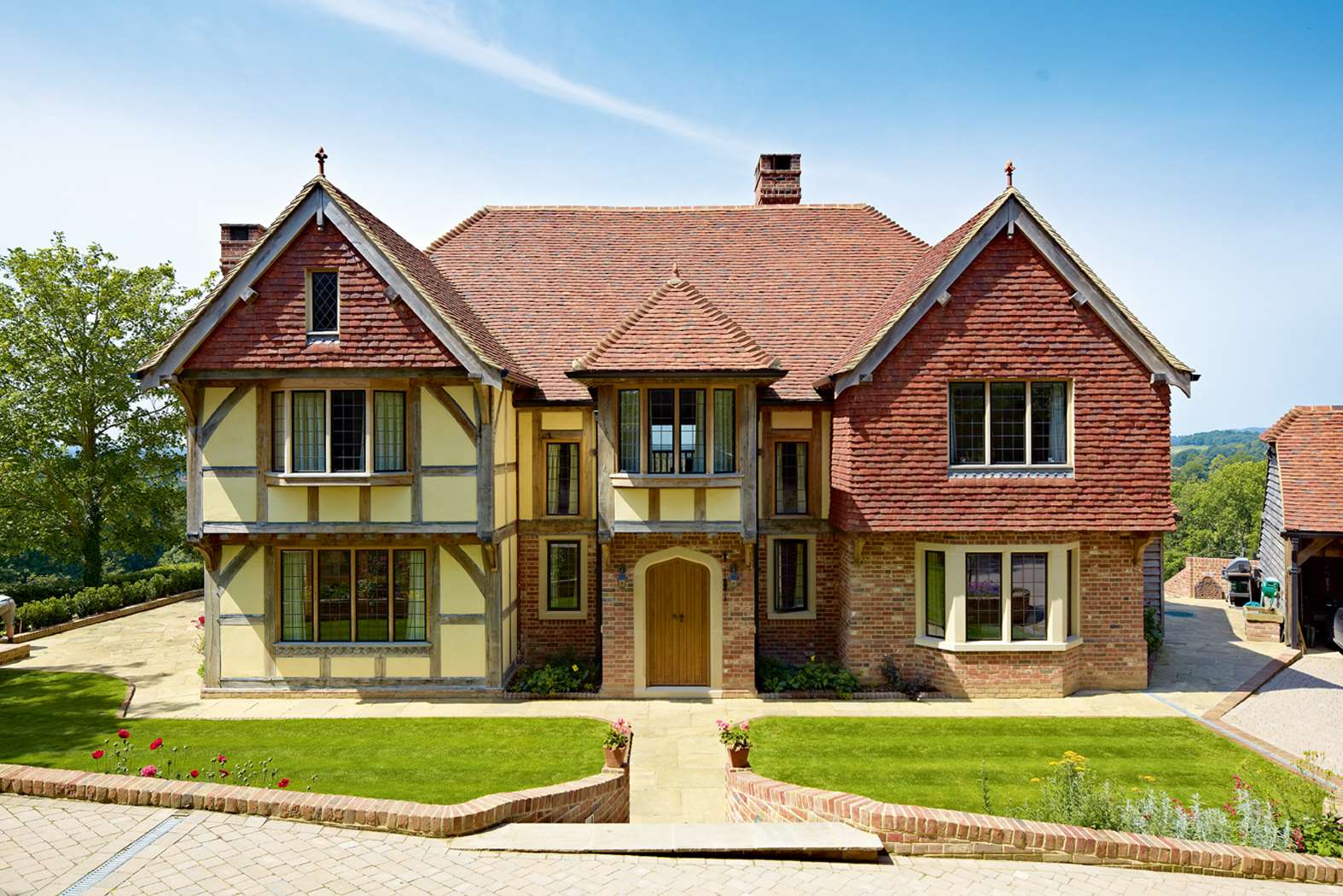#6604. Dual-faced Tudor revival: harmony of contrasts in English country architecture
Before us stands a magnificent example of a modern interpretation of a traditional English country house in Tudor style. The facade of the building demonstrates a characteristic asymmetrical composition with two protruding gables covered with terracotta tiles. The facade derives its special expressiveness from the contrasting combination of materials: light yellow stucco with wooden beams in half-timbered construction on the left and brickwork with elements of tile cladding on the right.
The architect masterfully incorporates traditional elements of Tudor style: pointed gables adorned with crosses, multi-paned windows with small glazing patterns, and decorative chimneys. The central entrance is designed as an arched wooden door with a characteristic Tudor curve, which lends authenticity to the building. The roof made of natural clay tiles with soft, flowing lines creates a sense of historical accuracy.
The facade is distinguished by meticulously detailed craftsmanship—from decorative wooden brackets supporting the protruding portions of the second floor to the elegant brickwork of the base. Bay windows add volume to the facade and provide abundant natural light to the interior spaces. The well-maintained grounds with a manicured lawn and paved pathways harmoniously complement the architectural ensemble, emphasizing its respectability and connection to English country building traditions.
